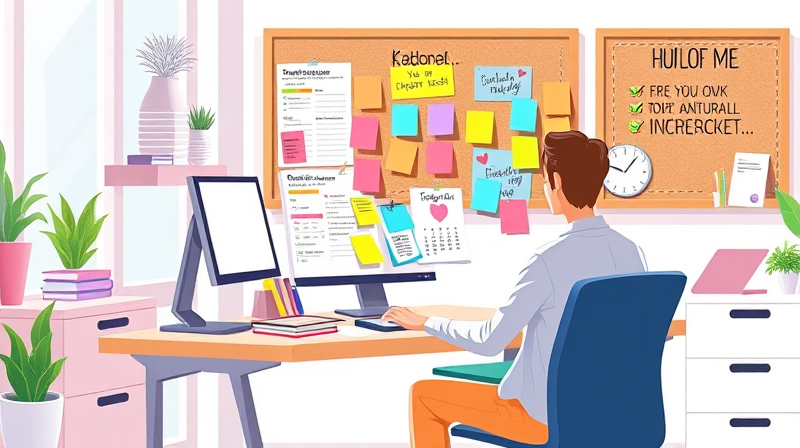Creating an effective agenda is an essential tool for both achieving your goals and maintaining a healthy work-life balance. With the right strategies, you can design a meeting plan that not only drives productivity but also inspires and recharges everyone involved. In a world that often emphasizes busyness, taking the time to structure your agenda can lead to greater clarity, reduced stress, and more meaningful outcomes.
When planning your agenda, it is important to start with a clear vision. The process is not simply about filling time slots; it is about creating a roadmap that guides you toward success while caring for overall well-being. This balanced approach ensures that your meeting leaves participants motivated, focused, and energized.
Setting the Stage: Defining Clear Objectives
Clear objectives lay the foundation for a successful meeting. Begin by explicitly stating the meeting's purpose, and outline what you hope to achieve. This practice not only sets the tone but also aligns every participant with the meeting's goals.
To achieve a well-defined purpose, consider brainstorming and collaborating with key stakeholders. By doing so, you ensure that each agenda item supports the overarching objectives. Maintaining a strong focus on the desired outcomes helps keep discussions on track and minimizes unnecessary diversions.
- Identify the main goal: Understand the core reason for the meeting.
- Detail measurable objectives: Define outcomes that can be tracked and assessed.
- Share the vision: Ensure all participants are on the same page.
This approach not only boosts confidence and engagement but also builds a shared commitment to success. Remember that a clearly articulated objective is the first step toward achieving tangible results.
Prioritizing and Allocating Time Wisely
One of the most common challenges in meetings is managing the time effectively. To overcome this, prioritize agenda items according to their importance and allocate a realistic time frame to each. This allows you to navigate through topics without feeling rushed or overwhelmed.
Integrate short breaks and buffer times throughout the agenda. These pauses are crucial for mental refreshment and help avoid burnout, ensuring that each discussion segment stays as effective as possible.
- Organize by priority: Arrange topics in order of importance.
- Implement time blocks: Dedicate specific time intervals for each subject.
- Include buffers: Reserve additional time to address unexpected issues.
The combination of prioritization and time allocation is a testament to a well-managed meeting. By allowing space for flexibility, you empower participants to delve deeper into critical discussions without losing sight of the agenda's structure.
Incorporating Wellness into Your Agenda
In today’s fast-paced work environment, integrating wellness elements into your agenda is no longer optional—it is imperative. Short breaks or mindfulness sessions can provide the necessary respite for participants, enhancing focus and overall satisfaction during long meetings.
For meetings that extend over several hours, consider scheduling meal times and encouraging the availability of healthy snacks. These wellness elements not only boost energy levels but also contribute to improved cognitive function and a more harmonious meeting environment.
Remember, a healthy mind leads to innovative ideas and sustained productivity. By prioritizing wellness, you show respect for your team's well-being while paving the way for successful outcomes.
Encouraging Collaboration and Active Engagement
A collaborative agenda fosters an inclusive atmosphere where everyone feels encouraged to contribute. By assigning facilitators for different agenda items, you ensure that each discussion is steered effectively and every voice is heard.
Encouraging engagement through open dialogue creates an environment rich in ideas and mutual support. When all participants have a chance to speak, the resulting diversity of perspectives often leads to more robust solutions and a greater sense of accomplishment.
- Assign facilitators: Appoint team members to lead specific agenda segments.
- Create interactive sessions: Include time for Q&A and group discussions.
- Promote inclusivity: Encourage feedback, suggestions, and collaborative decision-making.
This strategy not only enhances productivity but also strengthens team bonds, building a culture of trust and camaraderie among colleagues.
Building Flexibility and Actionable Outcomes
An effective agenda strikes a careful balance between structure and flexibility. While it is important to have a planned outline, allowing for adjustments can lead to productive, spontaneous discussions. Flexibility in your agenda means being prepared to adapt if a fruitful conversation unfolds or if unforeseen challenges emerge.
Concluding your meeting with a clear set of action items is essential. Summarize decisions made, assign responsibilities, and set deadlines to ensure that the momentum of the meeting is carried forward into actionable outcomes.
- Include follow-ups: Outline next steps and assign clear responsibilities.
- Set deadlines: Define realistic timelines to monitor progress.
- Review and recap: Provide a summary that everyone can refer back to.
This method not only reinforces the meeting’s achievements but also ensures that every participant knows their role in moving the team forward. A well-rounded agenda leaves no room for ambiguity and paves the way for success through shared commitment and clarity.
Ultimately, crafting an agenda is an ongoing learning process. Seek input and feedback from all participants to continuously improve the structure and content of your meetings. By nurturing a culture of collaboration and reflection, you empower your team to thrive both professionally and personally.
Embrace these strategies and create agendas that are not only goals-oriented but also holistic in their approach. Your well-planned agenda is not just a schedule—it is an inspiring roadmap that drives achievement, fosters engagement, and promotes a healthier, more balanced work environment.








